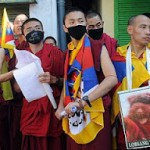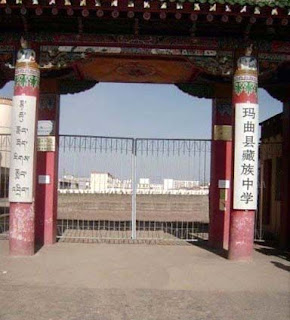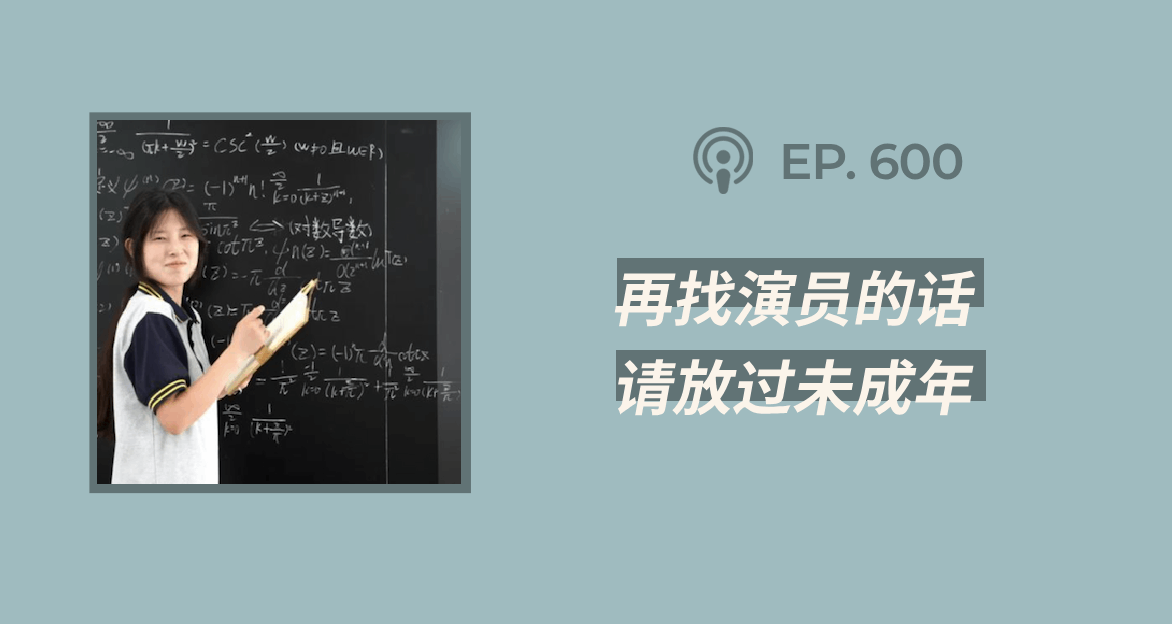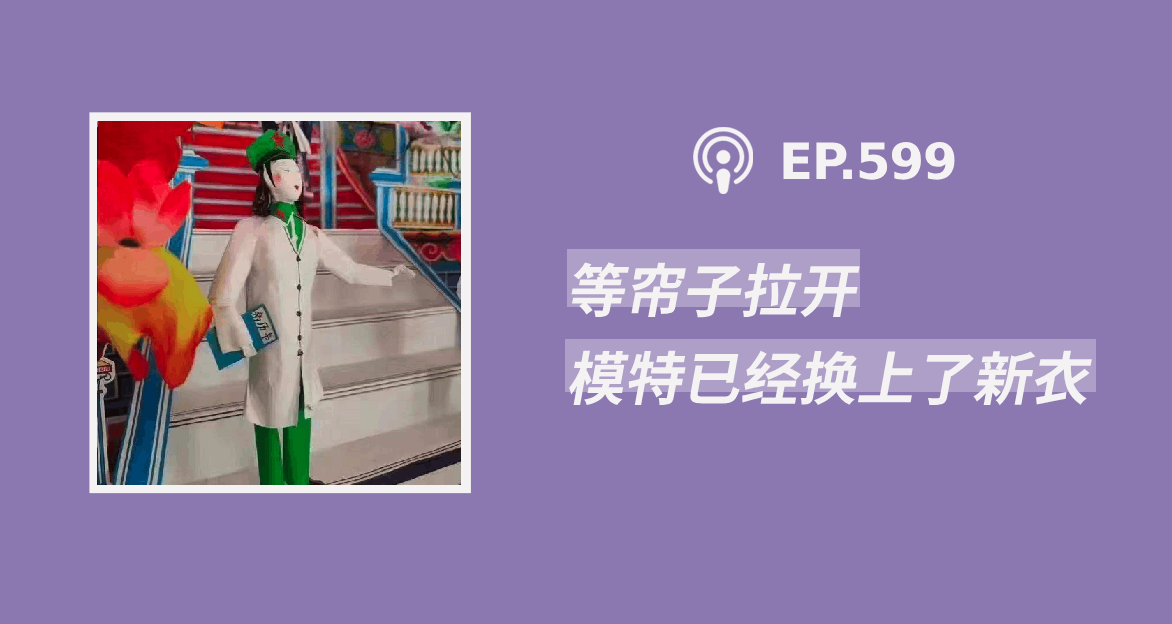来源:英国卫报
住南亚地区记者贾森·伯克(Jason Burke)3月26日发自达兰萨拉
译者:Tenzin Losel,傅春雨 @boattractor_cj
(编者按语:才让吉见证了她家作为藏人生活的日趋艰难,见证了她同学的抗议惨遭镇压。这个月,她朝自己身上浇了5升汽油,然后将自己点燃。)
在2011年10月于达兰萨拉举行的一次抗议活动中,藏人僧人手举有自焚者遗像的标语牌抗议中国对西藏的统治。 摄影:洛桑旺杰
当她还是少女时,一年中最让才让吉开心的日子,就是每年牧区的牧民们准备搬往夏季牧场的那个晚上以及从夏季牧场返回的前夜。在中国的甘肃省哲托地区生活着30多户游牧民,他们的生活节奏一直是随季节而变。春天他们将全部的家当放到牦牛背上,然后骑着牦牛,赶着牲畜,去往高地和山谷。在那里,牲畜有肥美的水草,孩子们在清澈的湖泊和山间小溪中有青蛙相伴嬉戏。冬日来临,他们再返回到海拔较低的牧场。
在牧场搬迁的前一天,所有笨重的什物都会提前打包带走。女人和孩子们会多留一天,睡在星光灿烂的草原上,等着第二天才出发。这是才让吉最快活的时光。
“我记得她总是很兴奋。她喜欢和她的兄弟姐妹,还有她的表兄妹们一起露宿野外。”她的一位亲戚上个星期接受卫报采访时这么说。“即使她长大上学之后,她也喜欢和她的家人住在夏季牧场。她不怎么喜欢镇里。”
三个星期前的一个下午,已是20岁的才让吉在玛曲县的一个菜市场将自己点燃。她最后所做的事情是走进一个公共厕所,脱掉她身上的藏装外套,再把5升汽油浇到身上。然后她走向菜市场,点燃了自己,成为不到一年之内的第23位自焚的藏人。
而最近几周每隔几天就有这样的自焚消息传出。仅才让吉之后又有7名藏人追随其后,其中包括中国国家主席胡锦涛到访印度之前在新德里自焚的一位27岁的藏人。在印度山城达兰萨拉流亡藏人社区的街道上,到处贴满了被当地流亡藏人称为“烈士”的照片。最近的一位是44岁的农民。没人怀疑还会有更多的类似事件发生。
在达兰萨拉(达赖喇嘛自1959年的反抗失败流亡印度后就居住于此),流亡藏人说是中国当局的高压政策及其所带来的绝望造成了自焚的发生。从一所(译注:境内藏地)寺院里偷偷带出的信件,列举了当局在藏区学校对藏语教学的种种限制;而大量增加的安全部队的监控,以及对宗教活动的新增管制措施,则是两周前在他自己的寺院门口自焚的34岁僧人(译注:即3月14日在青海省黄南州同仁县自焚的隆务寺僧人加央华旦),之所以自焚的原因。信中并提到,另外一个因素则是持续性的强制游牧民定居的政策。
而中国官方则指责这种行为是“分裂分子的阴谋”或称他们为“犯罪分子”。中国官方的新闻媒体声称才让吉因头部意外撞伤患上了忧郁症。但她的亲人们(在接受采访时请求匿名)则讲诉了完全不同的故事。
才让吉出生于1992年,是一对牧民夫妇的第二个孩子。她家乡所在牧区有30多户牧民,她的成长岁月一直都是与作为牧民命根子的牦牛、马和羊群相伴。她很少到摩托车程需2小时之遥的玛曲县县城,那里才有离牧区最近的学校和简陋的医院。他们就这样一直过着质朴、简单,也很艰苦的生活。才让吉的家人曾眼看着牧区的女人在临盆时由于缺乏起码医疗条件而亡故。他们几乎没有一个人会写字认字。
然而,也有变化发生。当才让吉还是一个小女孩的时候,她的亲人回忆道,政府出台了新政策,牧区的每户牧民只允许保留一小块放牧地,并且还要用铁丝网将草场分开。以前那种在高原草场上自由自在放牧的日子从此结束了。
另一个变化就是教育。牧区的孩子从来都不用到远离牧区的镇里上学。但是新学校建好了,而且很大程度上这些新学校是专为将牧民大量集中移居到像玛曲这样的县城而修建的。才让吉尽力说服她的父母,让她和她弟弟到县城的藏族中学去读书。最后她的姨妈帮忙说服了她父母,在她11岁那年,才让吉开始了她必须住校的学习生活。
“她学得很棒,虽然像很多牧区的孩子一样上学晚,但她很快就跟上了。她的老师们都说她是其他同学的榜样。”她的亲戚说。
3月自焚身亡的才让吉和她就读的玛曲县藏族中学(学校图片由唯色补充。)
尽管学习不错,才让吉并没有忘记她自己来自哪里。由于有限的放牧区域使得畜牧业不断萎缩,才让吉的许多牧民亲戚现在也只好搬到玛曲县城居住。但是在寒暑假期间,才让吉更宁愿回到牧区与其余家里人一起生活。才让吉上学的县城不断扩展,新修的马路、商店以及大量的汉人移民,与牧区乡下形成了强烈的对比。
“每次从学校回来,她和我们之间没有任何生分。她也长大懂事了,能帮着干一些家里的活,比如照看牛群、羊群什么的,对此她仍然觉得很有乐趣。”她的一位亲人回忆道,“她的嗓子很好,每次牧区有什么节日的时候,她总是应要求为大家唱歌。”
日子就在这样的节日以及相伴随的宗教仪式之间慢慢流逝。藏传佛教的仪式被精心、仔细且显而易见地保持、传承着。就是在夏季的草场,也会专门搭一个小帐篷,供奉佛陀和尊者达赖喇嘛的法像。
“对于我们来说,宗教无处不在,是我们生活的一部分。”她的亲人说道。
如果说作为一个少女,才让吉没有任何预示她会触及“政治”的迹象,那么后来她酷爱读书,对知识充满渴望,则可能是一点征兆。
“当她回到家里和家人呆在一起时,她总是带着书。晚上当我们睡着以后,她仍然会坐在那里借着烛光看书。”她的亲人解释说。
要拼凑出是哪些事件导致才让吉走上自焚之路是很困难的。这种行为本身并不符合佛教的基本教义,虽然达赖喇嘛从不鼓励这种行为,但他也说他可以理解这种行为背后的原因。不过,即便才让吉没有主动地寻求参与抗议活动,她也会很快发现自己被动地陷入了漩涡的中心。
2008年春,她目睹了近几十年来西藏最大的一次动荡。和平的抗议示威随着安全部队的开进镇压,在许多市区和县城演变成了骚乱。在玛曲县,有警车与政府部门被焚烧。在随后的大规模镇压中,据西藏支持者、人权组织和西方国家的报道,有成百上千人被抓。
但是动荡并没有结束,至少在玛曲县没有。2010年,才让吉所在学校成了抗议活动的中心。学生们在玛曲县举行了要求自由和西藏独立的示威。虽然有几十人在这次抗议中被抓,一个月后又发生了另一次抗议活动。此后一位深受欢迎的校长被开除,至少有两位教师被监禁,从而激起了更大的愤怒。才让吉发现自己已置身于活动的氛围之中。
在2008年的动荡之后,藏人的“政治觉醒和民族意识”达至了前所未有的水平,一位在达兰萨拉的僧人上周这样解释。他要求不要公开他的身份因为担心他将来回到西藏会遭到报复。“随着网络和手机的普及,现在每个人都可以听到达赖喇嘛,听到抗议甚至自焚的消息。这和以前相比是很大的变化。”他对卫报说。
一月初,才让吉在与她的一个亲戚谈到一连串的自焚事件时表示,她很理解他们为什么要这样做。“没有人可以像这样继续生活下去。” 她说。
在冬季牧场与家人一起度过了一个月的寒假之后,在回到学校的第二天,才让吉自焚身亡。之前的晚上她住在一个亲戚的家里,第二天一个朋友用摩托车把她送到了学校。但才让吉并没有走进学校的大门,却直接走向了县城的市区。因为她若是在学校报了到,她将会连累学校老师担负责任,可能使老师遭受报复。 一个加油站拒绝卖给她汽油。第二个加油站卖了,才让吉最后的录像监控画面显示她正在加油站买那五升汽油。
几个小时过后,武装警察将才让吉烧焦的尸体抬出了玛曲县的菜市场。
(编者注:本文于3月27日登出前曾经过修改,删除了有关才让吉死亡的细节,以符合卫报报道自杀的相关规定。)
One Tibetan woman’s tragic path to self-immolation
Tsering Kyi had witnessed the erosion of her family’s way of life and the repression of her fellow students’ protests. This month she doused herself in five litres of petrol and se t herself alight
As a young girl, Tsering Kyi’s favourite days of the year were the eve of her village’s annual move to their summer pastures and the eve of their return. The lives of the 30 nomadic households of Tethok, in China‘s Gansu province, followed the rhythm of the seasons. In the spring they would load their household on to yaks and ride up into the high valleys and hills where their herds would find grass and the children would play with frogs in the lakes and streams. As the winter approached, they would return to lower grazing.
A day before they moved all the heavy items would be packed and sent ahead. The women and children would remain behind, sleeping under the stars, to follow the next day. This was Kyi’s favourite time.
“I remember how she was always excited. She loved to sleep outside with her sister and brothers and all the cousins,” said a close relative interviewed by the Guardian last week. “Even when she went to school and was a teenager she still came with the family to the pastures in the summer. She didn’t like the town so much.”
Three weeks ago, in the late afternoon, Kyi, now a 20-year-old student, set herself alight in a vegetable market in the centre of Machu town. Her last acts were to enter a public toilet, take off her traditional Tibetan overdress and douse herself in petrol. She then walked out into the market, ignited the fuel and became the 23rd Tibetan to self-immolate in just under a year.
Every few days in recent weeks there has been a report of another such burning. Since Kyi died seven more have followed suit – including a 27-year-old man who set himself on fire in New Delhi before a visit by China’s president, Hu Jintao. The streets of Dharamsala, the Indian hill town where the Tibetan community in exile is based, are full of posters of these “martyrs”, as they are known locally. The most recent poster shows a 44-year-old farmer. Few doubt there will be many more.
Tibetans in Dharamsala, where the Dalai Lama has lived since fleeing Tibet after a failed revolt in 1959, say the self-immolations are born of desperation in the face of the Chinese authorities’ repressive policies. A letter smuggled out from one monastery lists restrictions on Tibetan language teaching in local schools, an increased presence of security personnel and new controls on religious practice as reasons behind the self-immolation of a 34-year-old monk outside its gates two weeks ago. Another factor, it says, is the continuing enforced settlement of the region’s nomads.
Chinese officials blame the suicides on “separatist plots” or “criminals“. The official Chinese news agency said Kyi was suffering depression following a head injury sustained in an accident. Her relatives, who insisted on anonymity when interviewed, tell a different story.
Kyi was born in 1992, the second child of two nomadic farmers. Her community was the village’s 30 households, and her days were spent with the yaks, horses and sheep that were their livelihood. She rarely visited Machu, the town two hours’ motorbike ride away where the nearest school and basic health facilities were located. It was a simple, if harsh life. Members of Kyi’s family watched women die in childbirth for want of medical attention. Almost no one could read or write.
Change was coming, however. When Kyi was still a young girl, relatives remembered, a new government policy led to each household being allocated a plot of land for grazing and barbed wire divided the high pastures. The old days of allowing the herds to roam freely over the high plateau grassland were over.
Another change was education. Nomad children had never gone to schools in distant towns. But new facilities were being opened, in part to cater for the huge numbers of nomads being resettled in places like Machu. Kyi set about persuading her parents to send her and her younger brother to the Tibetan middle school in the town. An aunt finally convinced them to agree and, aged 11, Kyi started lessons, staying in the hostel attached to the school during term time.
“She did really well. She was starting late like most nomad children but made up for lost time. Her teachers said she was an example to the other kids,” said the relative.
But if Kyi thrived at the school, she did not lose sight of her roots. With their herds dwindling due to a lack of adequate pasture, some relatives were now living in Machu town. But Kyi preferred to travel back to be with the rest of her family during the long summer and winter breaks. The contrast with the fast-growing country town where she studied, with its new grids of roads, shops and large numbers of Han Chinese immigrants, was stark.
“She would come back from school and it was like nothing was different, for her or us. She was older and so able to get involved with all the tasks like looking after the yaks, shearing the sheep and so on. And she still had fun,” remembered the relative. “She had a wonderful voice and was always in demand in the village to sing at all the festivals.”
Such festivals – and their accompanying religious rituals – marked the slow progression of the days. The rites of Tibetan Buddhism were carefully, unquestioningly observed. Even in the summer pastures, a small tent was set up to shelter a sculpture of the Buddha and a picture of the Dalai Lama.
“Religion is everywhere for us. It is just part of our lives,” said the relative.
But if Kyi did not show any signs of becoming “political” as a young teenager, she was now an avid reader, hungry for knowledge.
“When she came back to be with her family, she always brought books. When it was dark, when we had all gone to sleep, she would be still there, reading by the light of a lamp,” the relative said.
Unpicking the course of events that led Kyi to her self-immolation is difficult. The act itself goes against many of the fundamental tenets of Buddhism and although the Dalai Lama has refused to condone it, he says he understands the reasons behind it. But if Kyi had not actively searched for involvement in activism, she was soon to find herself plunged into its centre.
The spring of 2008 saw the most significant unrest in Tibet for decades. Peaceful protests turned into serious riots in many cities and towns as security forces moved to disperse demonstrators. In Machu police cars and government buildings were burned. In a major crackdown, hundreds were detained, according to Tibetan campaigners, human rights groups and western governments.
But the unrest did not stop, at least not in Machu. Kyi’s school became a centre of protest in 2010 when students staged a demonstration calling for more freedom and Tibetan independence. Though dozens were arrested, another protest took place a month later. Then the popular headmaster was fired and at least two teachers detained, provoking further anger. Kyi had found herself in a hotbed of activism.
Following the 2008 unrest there is now an unprecedented level of “political consciousness and Tibetan nationalism”, a monk in Dharamsala said last week. He would only speak anonymously as he feared reprisals when he returns to Tibet. “With the internet and mobile phones, everyone now hears about what the Dalai Lama is doing, the protests, every burning. That is a huge change from before,” he told the Guardian.
In early January Kyi spoke of the spate of self-immolations and told a close relative that she understood why they were happening. “No one could go on living like this,” she said.
Kyi died the day after returning from a month’s winter break spent with her family in the winter pastures. She had spent the night at a cousin’s home and a friend had given her a lift on his motorbike to school. Kyi did not enter – had she signed the registration book she would have been the responsibility of her teachers and thus have exposed them to reprisals – but headed into the town. One petrol station refused to serve her. A second did not. The last images of Tsering Kyi show her buying a five litre can of fuel.
Hours later Chinese security officials were removing her charred remains from Machu’s vegetable market.
• This article was amended on 27 March 2012 to remove details of Tsering Kyi’s death that were inconsistent with the Guardian’s guidelines on the reporting of suicides.
本文由自动聚合程序取自网络,内容和观点不代表数字时代立场















